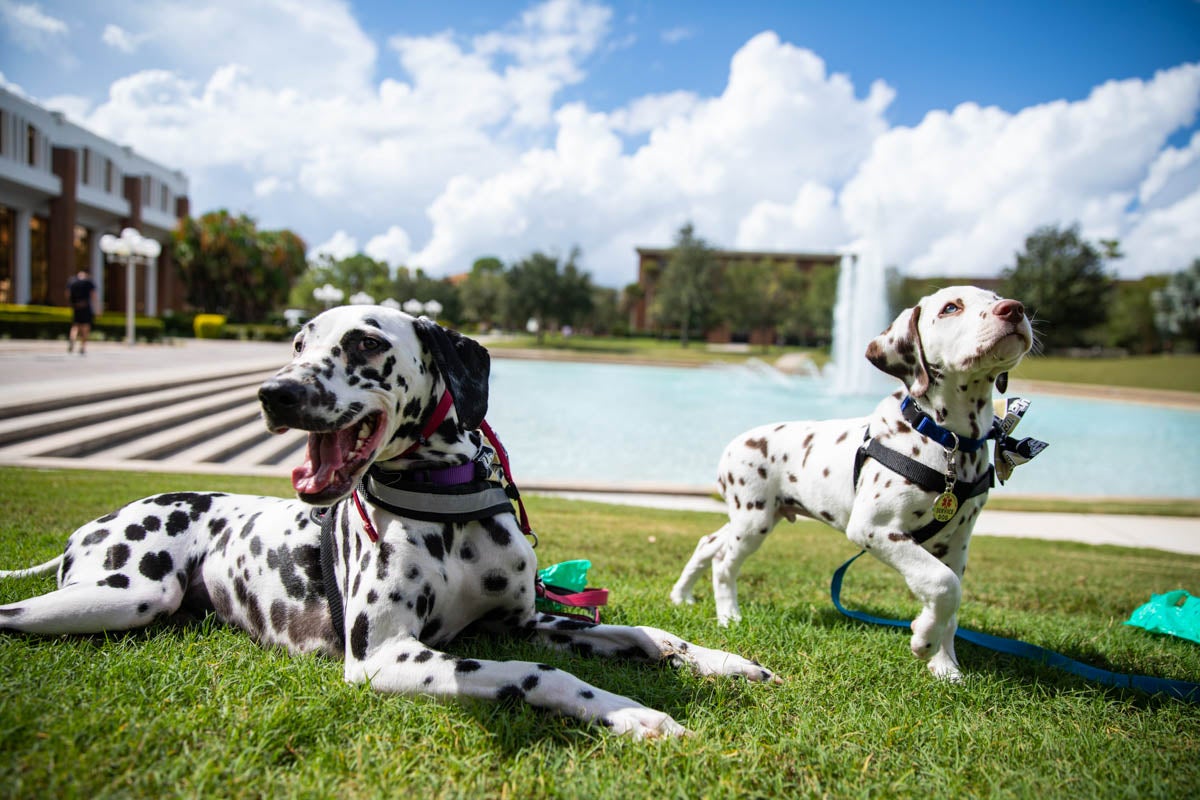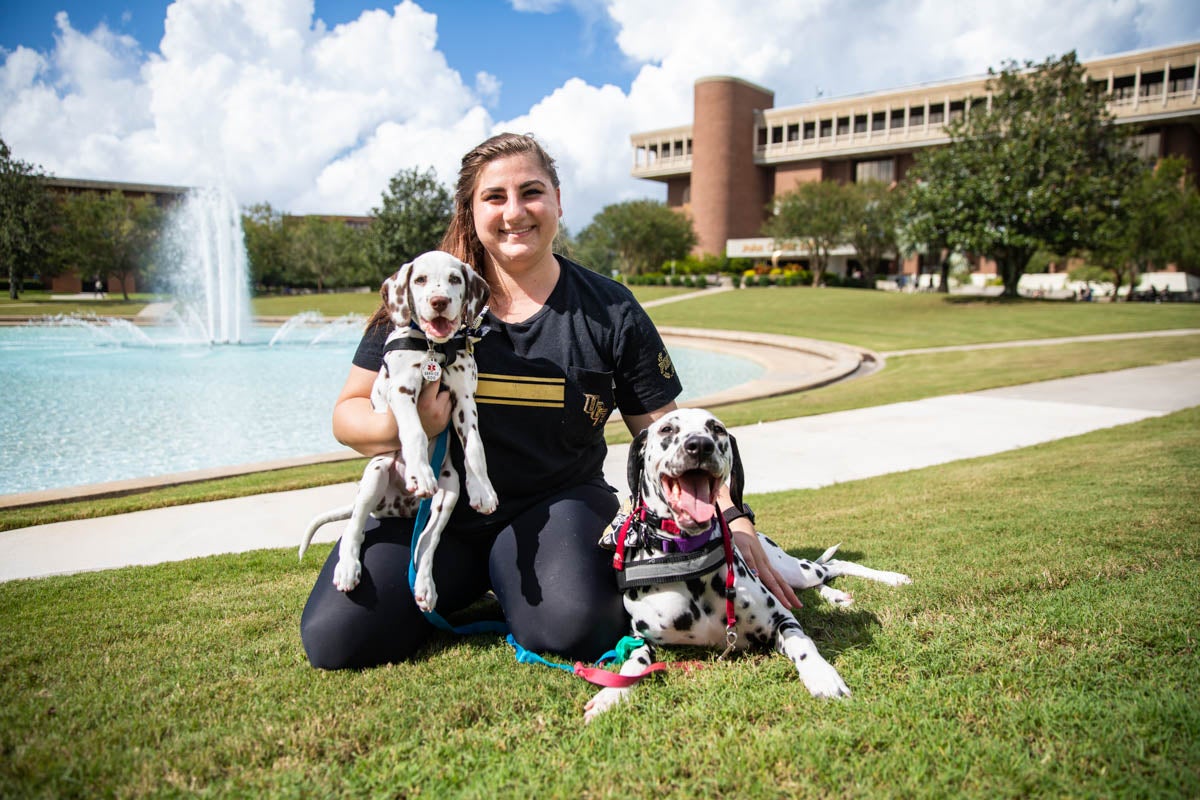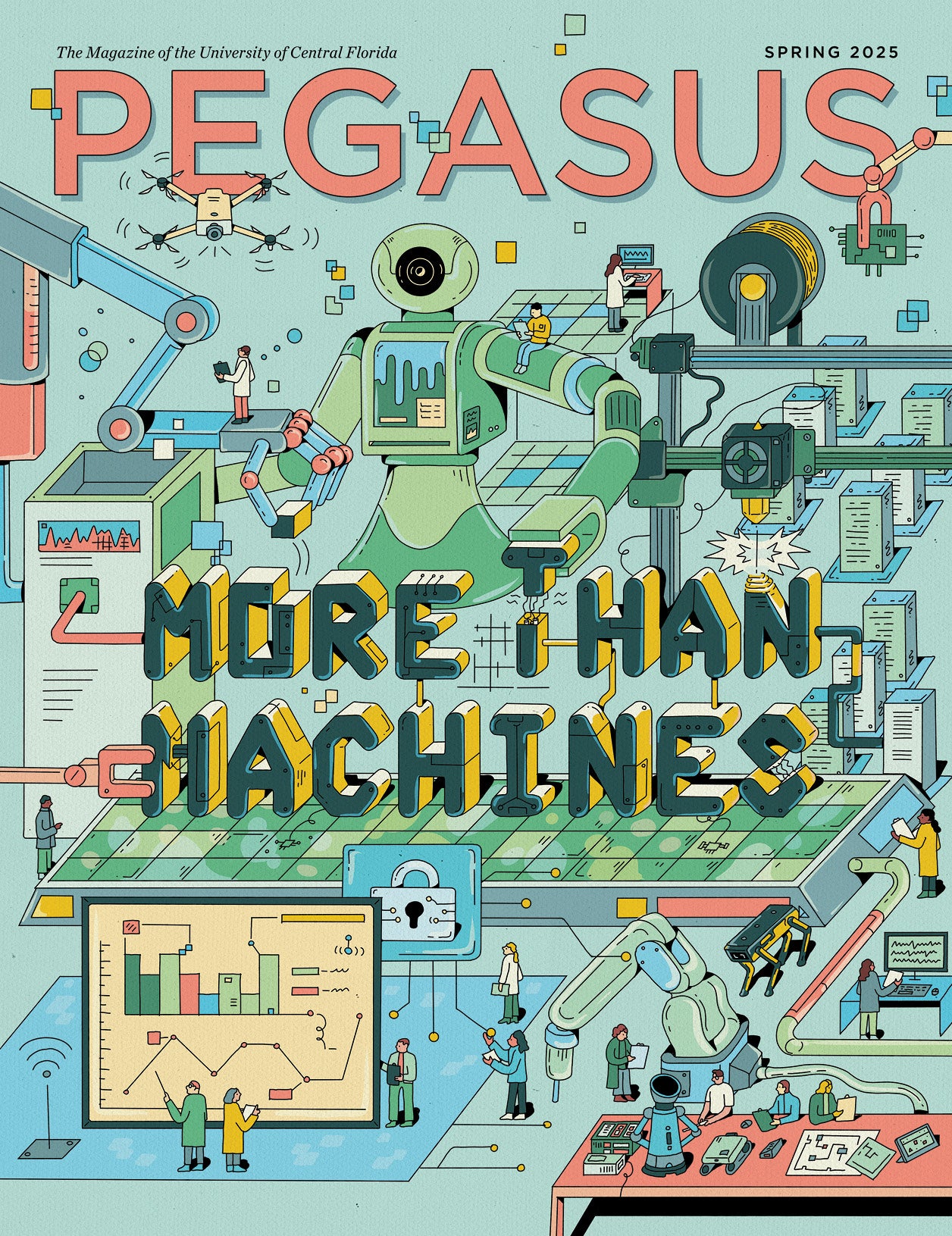Nothing can light up someone’s day quite like a dog. But canines can bring more than just joy. More than 10,000 people living in America use service dogs every year to help cope with their physical and mental conditions.
Casey Bruno ’18 is one of those people.
Bruno’s 2-year-old dalmatian, Paisley, not only helps her deal with depression, but also has enhanced her social life and is a constant reminder of her life’s passion.
Originally from Tampa, Bruno, who graduated with a biology degree from UCF in August, says she had anxiety from a young age that turned into depression while she was in college. She heard that services dogs were helpful for treatment and the idea grew on her. It’s now been two years since Bruno brought home Paisley, who was then only 8 weeks old.
“One of the biggest things I tell people is that taking care of a dog helps you to take care of yourself.”
In that time, she’s been able to complete most of Paisley’s ADA-compliance training, gotten her accustomed to attending classes on campus and even brings her along on shifts at Banfield Pet Hospital, where Bruno works as a veterinary assistant. Through outings at dog parks and Memory Mall, Bruno has found it easier to meet people.
“Before I knew it, I was making friends,” Bruno says. “[Paisley] helped me fulfill all of my wishes.”
Having Paisley by her side has also helped her to get off her anti-depressants.
“She’s helped me so much. One of the biggest things I tell people is that taking care of a dog helps you to take care of yourself,” Bruno says. “When I was depressed, I wouldn’t want to do anything, but taking care of a dog, you have to take her out, you have to feed her. It got me out of the house and doing stuff.”
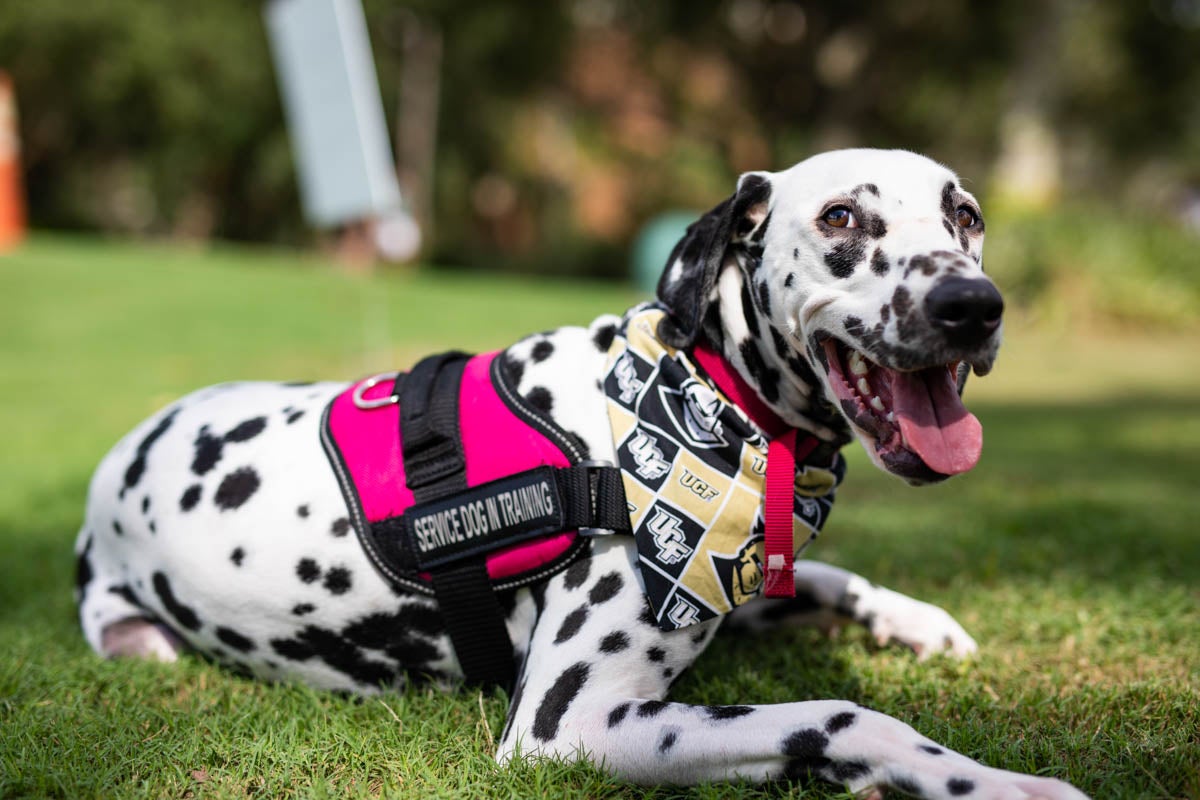
Top Dog
Last month, a post Bruno posted went viral, earning her a spot on several television news segments. The tweet featured a few photos of the two both wearing decorated grad caps. Bruno’s featured a paw print to represent Paisley, and Paisley’s displayed Bruno’s hand.
“When I thought about my college experience, I thought about Paisley. I knew that I wanted my cap to have the paw print on since it goes with me being pre-vet, but then I thought it would be so cute if she had a cap with my hand print on it because her experience has been [all about] me,” Bruno says.
Animal Helper
She is now pursuing a master’s degree in biomedical sciences and ultimately wants to become an animal neurologist. This interest is partly inspired by her uncle, who does that for a living, and partly by the live-action version of 101 Dalmatians.
“They have a scene where they train a dalmatian to turn off the alarm in the morning, start the coffee and turn on the shower. More than the movie [being entertaining], I was like, ‘How do they train the dog to do that?’ So I got really into the breed,” Bruno says.
“You can’t always see problems that people have. … A lot of people don’t realize the impact service dogs have on people.”
While many people find trained animals like service or emotional support dogs to be helpful, there are some who criticize the use of them, especially when a person’s disability isn’t visible. They may seem fine in public, but are struggling with issues behind closed doors. Or their symptoms can be sporadic and difficult for them to figure out on their own. But ultimately emotional support animals provide companionship and aid their owners in dealing with personal issues, while service dogs are specifically trained to perform tasks to help individuals with disabilities.
“You can’t always see problems that people have,” Bruno says. “I used to get really bad panic attacks, but I have asthma so I didn’t know if I was having a panic or asthma attack. [Paisley] was always able to help me distinguish between it and helped me not have panic attacks anymore. A lot of people don’t realize the impact service dogs have on people.”
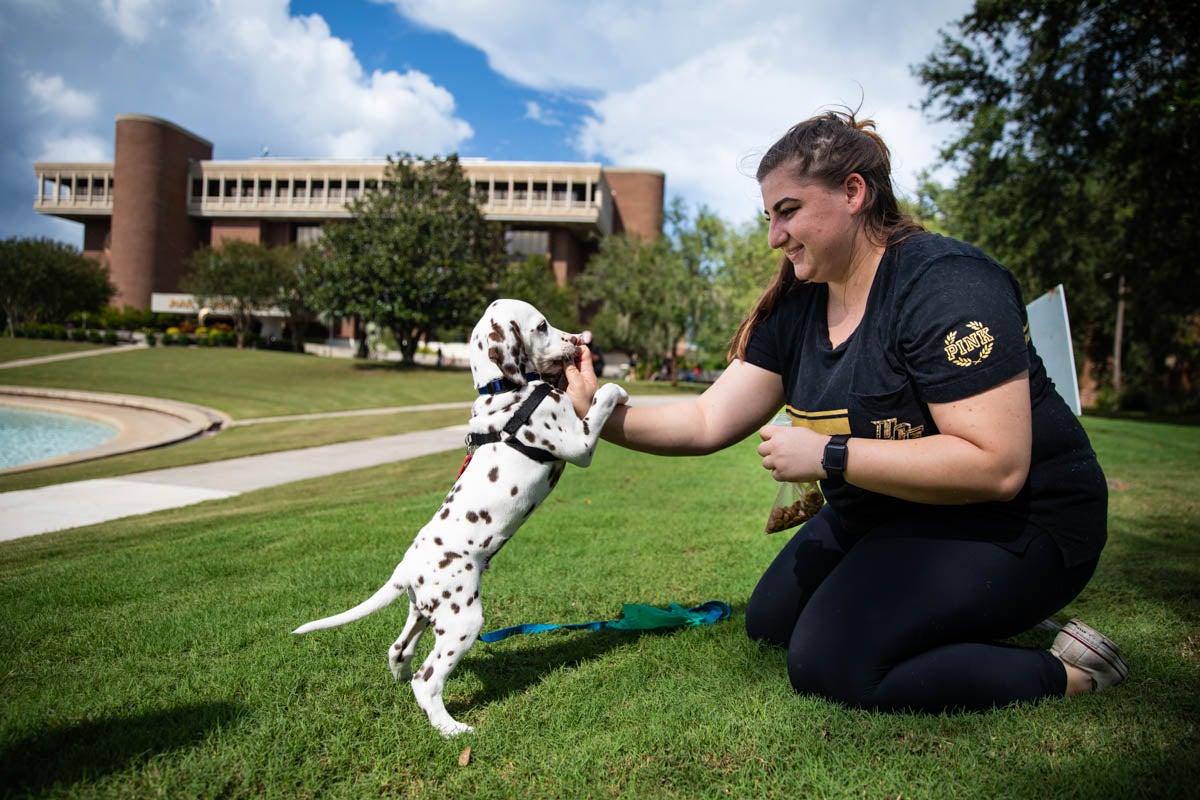
New Member of the Pack
While researching dalmatians, Bruno found the breed loves being trained and pleasing their owners, so when the time came for her to get a service dog two years ago, she knew this was the exact kind she wanted. Earlier this month, she stayed loyal to the breed when she picked up her second service dog, a now 9-week-old male dalmatian puppy named Chevron, from the same breeder as Paisley.
“He’s actually a lot better than [Paisley] was as a puppy,” Bruno says. “He’s more mellow. [My boyfriend and I] joke that he spends all his energy on growing.”
“It’s not just for me, other people love [service dogs] too.”
Paisley and Chevron were apprehensive of each other at first, but Bruno says they’re inseparable now. She’s excited for the opportunity for Paisley to help teach her younger brother how to be a good service dog. She also sees this as a chance for Chevron to help tighten up his older sister’s training. So far, Bruno and others are simply enjoying having a new puppy around.
“I brought him to lab for the first time just to get him used to being around people and the teacher’s assistant was like ‘I’m so happy. I’ve been so stressed. You just made my day.’ So it’s not just for me, other people love [service dogs,] too,” Bruno says.
